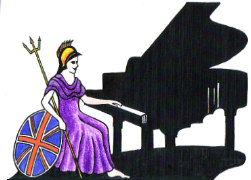Teachers, Accompanists and Piano Entertainers in the UK

UK Piano Page

Browse Locations England » Kent » Royal Tunbridge Wells
The Estate Yard
Eridge
Royal Tunbridge Wells, Kent TN3 9JR
England
The Piano Shop Kent is near Tunbridge Wells on the A26 and has a fantastic selection of pianos at all levels, both upright and grand, new and restored...
Russell House,
Grove Hill Road
Royal Tunbridge Wells, Kent TN1 1RZ
England
Covering Kent, Sussex and Surrey from stores in Tunbridge Wells and New Haw, and nationally through our website, Brittens Music has been supplying a ...
17a Electric Ln
Brixton, London SW9 8LA
England
South London Piano Moving is a friendly and
City of London, London SE1
England
Southwark piano moving and disposal in SE -
Ealing, London W5
England
Ealing piano moving and disposal, West London and
Camden, London NW3
England
Piano moving and disposing Camden and surrounding
65 Sankey Street
Warrington, Cheshire WA1 1SU
England
Today, we supply all styles of Acoustic Piano,
Music Festival for performers and guests Our 10th
18-06-2022 12:30PM
The Morecambe Bay Piano Group was set up to extend
11-12-2021 01:00PM
The Morecambe Bay Piano Group was set up to extend
08-01-2022 01:00PM
The Morecambe Bay Piano Group was set up to extend
12-02-2022 01:00PM